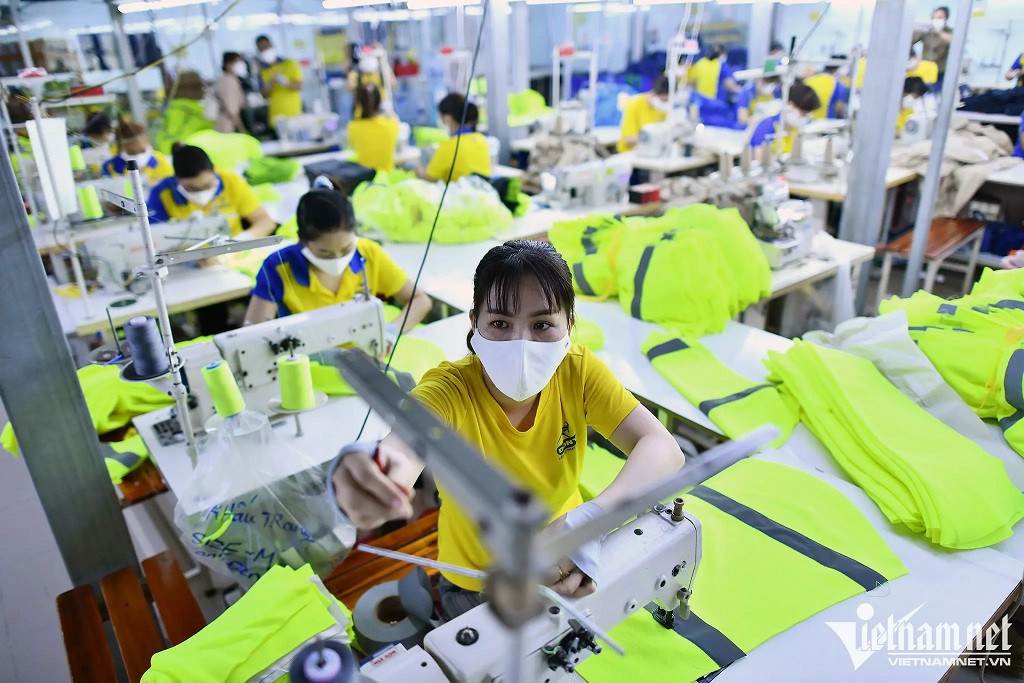
Than Duc Viet, general director of Garment 10 Company in Q4 2021, predicted that the world textile and garment market would recover in 2022 and would be even better than before the Covid-19 pandemic.
However, this is not true. The markets in Q3 and Q4 are becoming worse, with an input cost increase and profit decrease. The business performance in the H1 was good, but things will change in H2.
Vu Duc Giang, chair of Vitas, said that Vietnam exported $22.3 billion worth of products in H1, an increase of 17.7 percent over the same period last year.
However, it would face difficulties in the last six months of the year as inflation in many of Vietnam’s target markets is high and global purchasing power is decreasing.
Meanwhile, the cotton price has surged by 20 percent, which has increased production cost and affected Vietnam’s competitiveness.
A lack of orders is also a worry of footwear producers. Nguyen Huu Phuoc, director of Nguyen Phuoc Trading Production Shoes Sandals, said previously the company had orders one or two quarters in advance, but now receives orders 2-3 months in advance.
According to Phuoc, business performance in H1 was satisfactory, but now is slowing down. The orders are predicted to see a drop in September and October. The US and European markets are experiencing high inflation, while the Russia-Ukraine conflict continues.
Phuoc said many footwear companies now have to "eat from hand to mouth". Orders are not as abundant as previously. Some partners even have cancelled orders as demand is falling dramatically.
Nguyen Quang Vu, chair of the Binh Duong Leather and Footwear Association, confirmed that orders are on the decrease. Orders for August, September and October have dropped by 30 percent compared with the same period last year.
Phan Thi Thanh Xuan, deputy chair of Lefaso, said that member companies of the association are facing difficulties and the inventory level is high at 40 percent.
The enterprises lack orders from August 2022 to Q1 2023. Some companies may have to suspend production because of the lack of orders.
Vietnam’s cement exports have also decreased sharply because China, a big importer, is pursuing a zero-Covid policy.
Since May, most of Vietnam’s major export markets have seen declines in demand, especially in Bangladesh, Taiwan, the Philippines and Malaysia. Cement consumption is predicted to continue facing difficulties in H2.
As for woodwork exports, the Binh Duong Furniture Association (BIFA) reported that high transport costs have caused business profits to decrease. Some woodwork products have value lower than transport costs. The demand from the US and Europe has begun to decrease.
According to businesses, sharp decreases in fuel prices recently helped ease transport cost burden. However, input material prices have increased by 20-30 percent and demand decreases from large markets will challenge businesses in H2.
Businesses have been trying to seek new input material sources, negotiate with partners to obtain orders, cut unnecessary costs and increase productivity to offset the input cost increases, but they are still facing difficulties.
Economists have warned that US recession will affect Vietnam’s exports. It is Vietnam’s biggest export market for Vietnam which imported $56 billion worth of products in H1.
Meanwhile, the global economic growth rate is predicted at 3-3.6 percent only, which is lower than expected, and the markets are facing uncertainties.
Associations have asked commercial banks to extend debt payments, cut interest rates, provide loans mortgaged by inventories and provide unsecured loans.
They have also urged to speed up implementation of a 2 percent subsidy interest rate program worth VND40 trillion, and design a specific credit package to support export companies.
Analysts suggest that the government should consider cutting taxes and fees to ease the burden on enterprises, help businesses seek suppliers in order to prevent supply disruptions, and create favorable conditions for businesses to sell products in the domestic market.
The State budget collection was relatively high in H1, at 66 percent of the estimate.
Tran Thuy